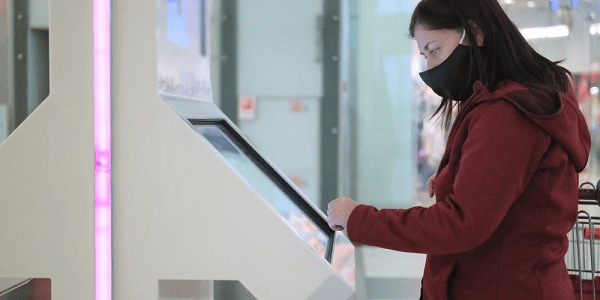
A well-rounded visitor management system must now include wellness screening, wellness verification and an access control system actuated by the results.
The COVID-19 pandemic is redefining visitor management. As we return to work, workplace safety no longer relies just on the ability to identify and assess employees and visitors.
Now, we must also evaluate the wellness of every person entering the facility. That means identical wellness requirements for anyone who needs facility access. These days, a well-rounded visitor management system includes three new parts: wellness screening, wellness verification and an access control system actuated by the results.
Gone are the days of a simple one-time photo ID verification or background check to assess suitability — we are now in the days of daily wellness checks for employees and visitors.
Now, the first step in assessing an employee’s or visitor’s suitability to enter a facility is a wellness screening. Just like background checks, wellness screenings come in many forms, depending on the degree of confidence required for the facility.
The systems with the most effective wellness screenings start this process in advance so that individuals can self-assess prior to visits. This can prevent unwell people from entering the facility for a screening, reducing risk and increasing confidence in workplace safety for other employees and visitors at the facility.
Additionally, wellness information should reset daily, as an individual’s health status one day has no bearing on the next. Prepare customers that they’ll need to perform wellness screenings every single day for every single person who needs to enter the facility.
As COVID-19 vaccines roll out, there is a new opportunity to streamline visitor management with wellness verification while retaining the risk mitigation and confidence boost of wellness screenings. Wellness verification is the process to check and verify an individual’s vaccination status or recent negative test.
Emerging eHealth wallet technologies offer individuals the ability to digitally assert their wellness status, making visitor management systems the ideal relying party. Encourage your customers to think of it like TSA Precheck for visitor management. Individuals who digitally assert their vaccination or testing status can potentially skip a wellness screening and move more quickly through security.
That said, the simple act of assessing an individual’s wellness is not enough. The access control system must respond appropriately to wellness information. An access control system should be able to keep all doors locked until an individual has successfully passed a wellness screening or verification, or alternatively, lock a door if the individual fails the screening or verification.
Ensuring that facility access relies on automated system responses, rather than manual input, reduces the risk for human error. Make sure your customers understand the critical role of automated controls in maintaining employee confidence in facility safety.
In the coming months, the most effective visitor management systems with the lowest risk and highest confidence will all share these themes of consistent wellness screenings and automated controls. When talking with your customers about their back-to-work plans and requirements, stress that wellness checks are all but mandatory for a successful transition to in-person operations.
The ability to track the wellness of people passing through their facilities offers these benefits, among others: preventing sick people from entering and potentially infecting others, knowing exactly who to notify about potential exposures, and keeping facilities open which reduces disruption for employees and boosts workplace morale.
Jeff Nigriny is CEO of CertiPath.
